Seyonce Knows
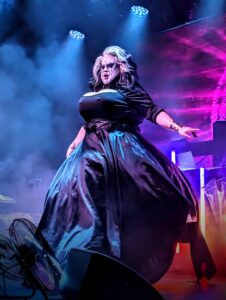 Growing up as a totally weird, totally queer child named Seyonce wasn’t exactly a walk in the park. I had a lot of people telling me who to be, or rather who not to be. I was always too loud, too lispy, too different, and ultimately; too gay. These voices were like a chorus of disapproval, a symphony of criticism that played relentlessly throughout my formative years.
Growing up as a totally weird, totally queer child named Seyonce wasn’t exactly a walk in the park. I had a lot of people telling me who to be, or rather who not to be. I was always too loud, too lispy, too different, and ultimately; too gay. These voices were like a chorus of disapproval, a symphony of criticism that played relentlessly throughout my formative years.
The critiques came from all angles. At school, my peers wielded bullying like a weapon, and at home, my parents actively dissuaded me from liking things that were not deemed suitable for little boys. It felt like my very essence was under attack, and I was constantly being told to diminish the qualities that made me, well, me.
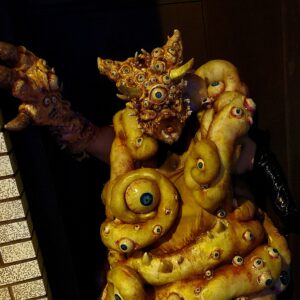 It wasn’t until well into my late teens that I discovered a crucial piece of my identity. My uncle, who had passed away before I was born, was gay. The cause of his death was due to HIV AIDS related complications. Learning about this part of my family’s history was a bittersweet revelation. On one hand, it explained why my journey had been so difficult, but on the other, it deepened the scars left by years of being told not to be myself.
It wasn’t until well into my late teens that I discovered a crucial piece of my identity. My uncle, who had passed away before I was born, was gay. The cause of his death was due to HIV AIDS related complications. Learning about this part of my family’s history was a bittersweet revelation. On one hand, it explained why my journey had been so difficult, but on the other, it deepened the scars left by years of being told not to be myself.
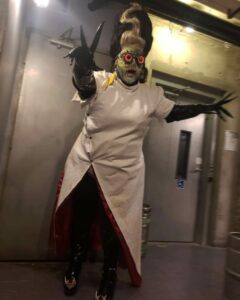 With much of my youth spent repressing my true self, a voice in my head continually urged me to conform. It took a toll on my authenticity and set the stage for a young adulthood marked by self-doubt and insecurity.
With much of my youth spent repressing my true self, a voice in my head continually urged me to conform. It took a toll on my authenticity and set the stage for a young adulthood marked by self-doubt and insecurity.
But amidst the darkness, there was always a glimmer of light—my escape. Music and art were my sanctuaries, my happy places where I could be the superstar of my own imagination. I pursued a life of art, illustration, and animation, transforming my fantasies into tangible creations. However, it wasn’t until I stumbled upon the world of drag that I truly found the key to unlocking my authentic self.
At first, my understanding of drag was limited to the stereotype of super gay men dressing as pretty women. It didn’t resonate with me initially. It was only when I discovered the diversity within drag—club kids, alternative drag, Dragula—that I realized drag is whatever you want it to be. It’s theater, it’s camp, it’s performance art. Drag can be anything, and that revelation changed my life.
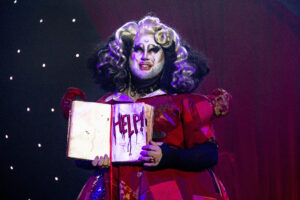 I immersed myself in drag, experimenting at home long before online tutorials and widespread popularity. It took six years of courage-building before I dared to showcase my alter ego in public. My late twenties marked my first live drag show—an intimidating plunge into a foreign world for a lifelong introvert like me.
I immersed myself in drag, experimenting at home long before online tutorials and widespread popularity. It took six years of courage-building before I dared to showcase my alter ego in public. My late twenties marked my first live drag show—an intimidating plunge into a foreign world for a lifelong introvert like me.
Stepping into a gay bar for the first time was like entering uncharted territory. Yet, despite the initial fear, I found a welcoming community that embraced my weirdness with open arms. Attending a Dragula viewing party was a turning point, introducing me to like-minded artsy weirdos who helped me feel more comfortable being myself.
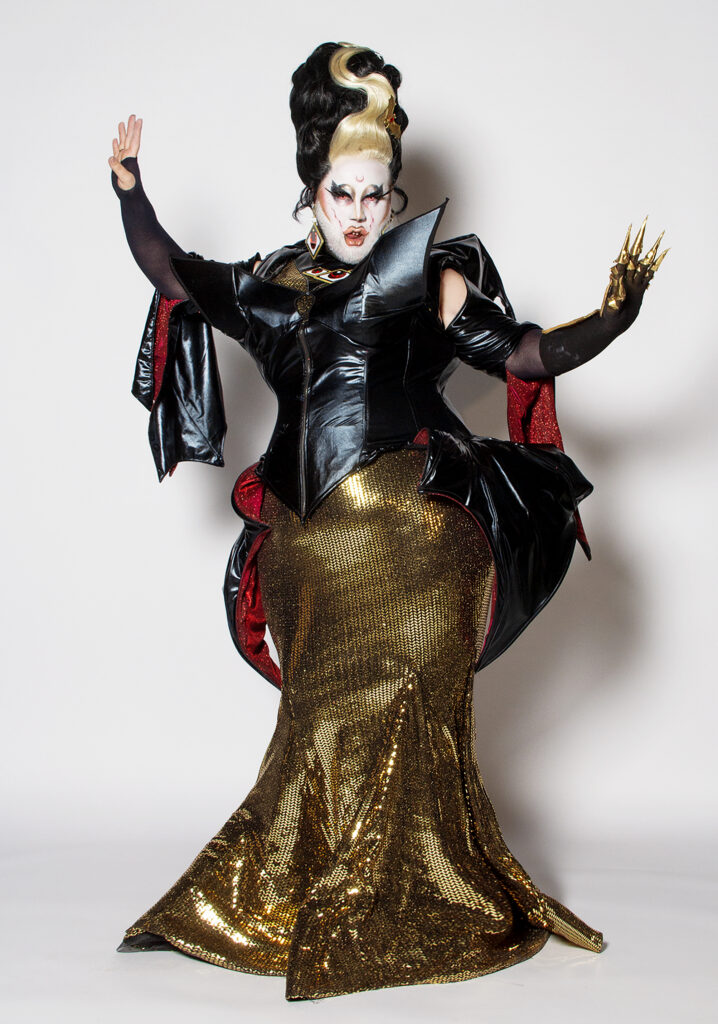 Soon after, the opportunities came knocking. Drag became more than a form of self-expression; it became a lifeline. It boosted my confidence, honed my public speaking and socializing skills, and provided a sense of belonging. Drag gave me a platform to express myself in my art, allowing me to feel like the rockstar I had imagined in my head all those years ago.
Soon after, the opportunities came knocking. Drag became more than a form of self-expression; it became a lifeline. It boosted my confidence, honed my public speaking and socializing skills, and provided a sense of belonging. Drag gave me a platform to express myself in my art, allowing me to feel like the rockstar I had imagined in my head all those years ago.
While I still grapple with internal struggles, drag has been a constant source of support, helping me navigate this wacky world with a newfound strength and resilience. In the face of adversity, Seyonce emerged—a queer, vibrant, and unapologetically authentic force to be reckoned with.
